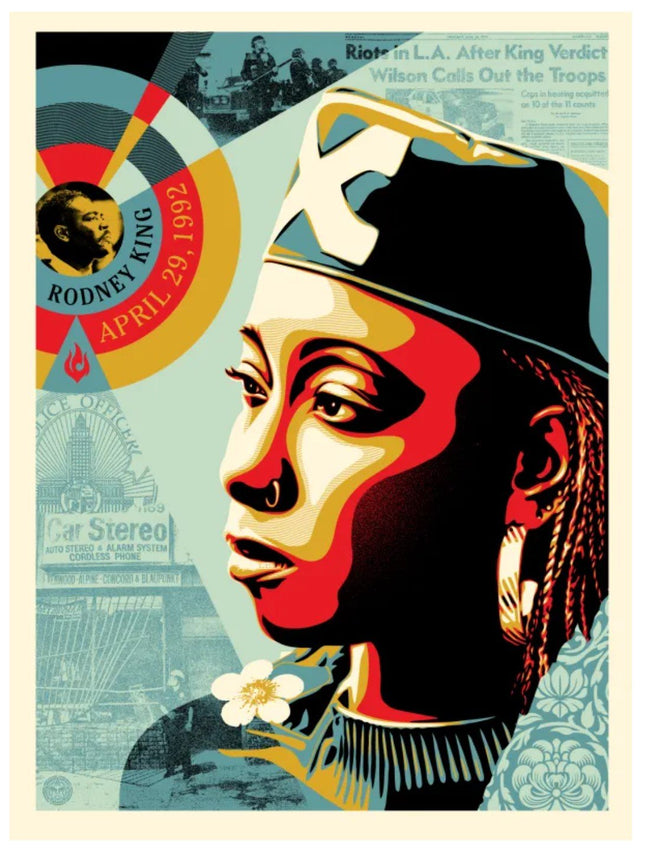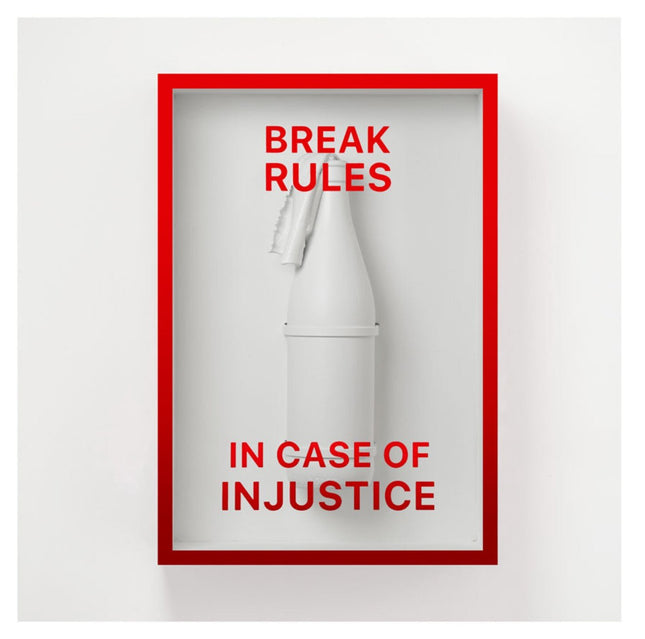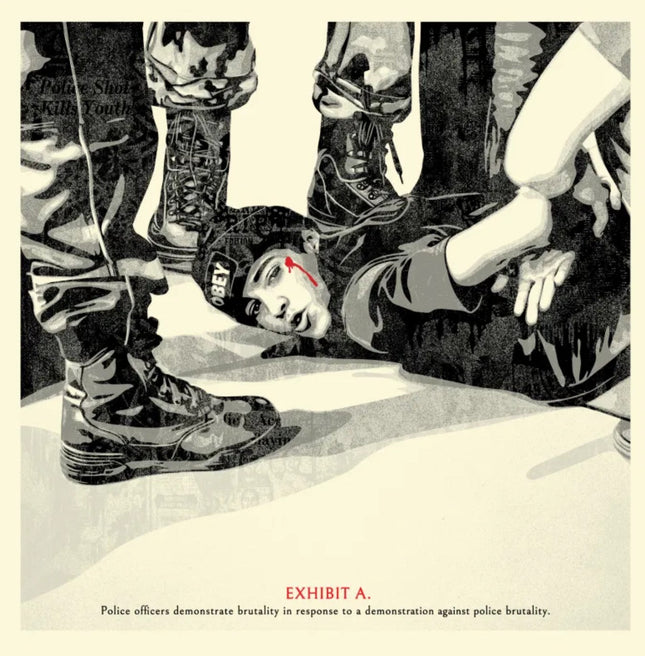Law

Shepard Fairey- OBEY Eyes On The King Verdict Silkscreen Print by Shepard Fairey- OBEY
Eyes On The King Verdict 4-Color Hand-Pulled Limited Edition Silkscreen Print on Fine Speckletone Art Paper by Shepard Fairey x Ted Soqui Rare Street Art OBEY Pop Artwork Artist. 2022 Signed by Shepard Fairey & Ted Soqui, Numbered 18x24 inches. Screenprint on thick cream Speckletone paper. Numbered edition of 600. "I based this “Eyes on the King Verdict” print on photos taken by Ted Soqui during the LA riots of spring 1992. Ted has a long history of photographing activists and protests, which began after the “not guilty” verdicts on April 29, 1992, for the four officers who severely beat Rodney King. I especially love the central pic of a young woman protester in a Malcolm X hat contemplating the scene. I think it is important to consider the symbolic weight of the Rodney King verdict and the emotional impact on communities of color seeking justice and accountability. At the time, 30 years ago, I remember feeling enraged that such a blatant act of police brutality was going unpunished when it was captured on video. It is heartbreaking how frequently similar acts of violence and abuse of power by law enforcement have gone unpunished, even when caught on camera. I don’t ever condone violence or looting, but I understand why LA erupted in riots and protests after the King verdict. When people feel that the American system has failed them repeatedly, things can reach a boiling point. The urge to protest injustice and the right to do so are legitimate, even if looting is not legitimate. The LA riots were a tragic mixture. However, beware of those who try to conflate protest with “criminal agitation” or “inciting a riot.” When the system fails the people, it is nothing short of patriotic for the people to protest for a solution. Ted Soqui and I both signed the “Eyes on the King Verdict” print.” – Shepard
$421.00

Aspencrow In Case of Injustice Archival Print by Aspencrow
In Case of Injustice Archival Pigment Fine Art Limited Edition Print on 290gsm Moab Entrada Paper by Modern Pop Street Graffiti Artist Aspencrow. Archival Pigment Print on 290gsm Moab Entrada Fine Art Paper with an Archival Film Overlay Size: 20 x 20 Inches Release: August 30, 2021 Run of: 35
$394.00

Shepard Fairey- OBEY The High Cost Of Free Speech Silkscreen Print by Shepard Fairey- OBEY
The High Cost Of Free Speech Limited Edition 2-Color Hand-Pulled Silkscreen Print on Speckled Cream Paper by Shepard Fairey Graffiti Street Artist Modern Pop Art. Punk rock ignited a lot of creative and philosophical things for me, and punk principles continuously remind me that speaking truth to power and questioning authority is paramount in life. The Dead Kennedys, The Clash, Black Flag, and the Circle Jerks are just a few of the groups that referenced injustices such as police brutality and abuse of power in their songs, inspiring me to speak out about the same subjects through my art. I have made a lot of lasting friendships through punk rock and its cultural offshoots. One of those friends is Sean Bonner, who began ordering my prints in the ’90s while he was art director for punk label Victory Records.
$421.00



